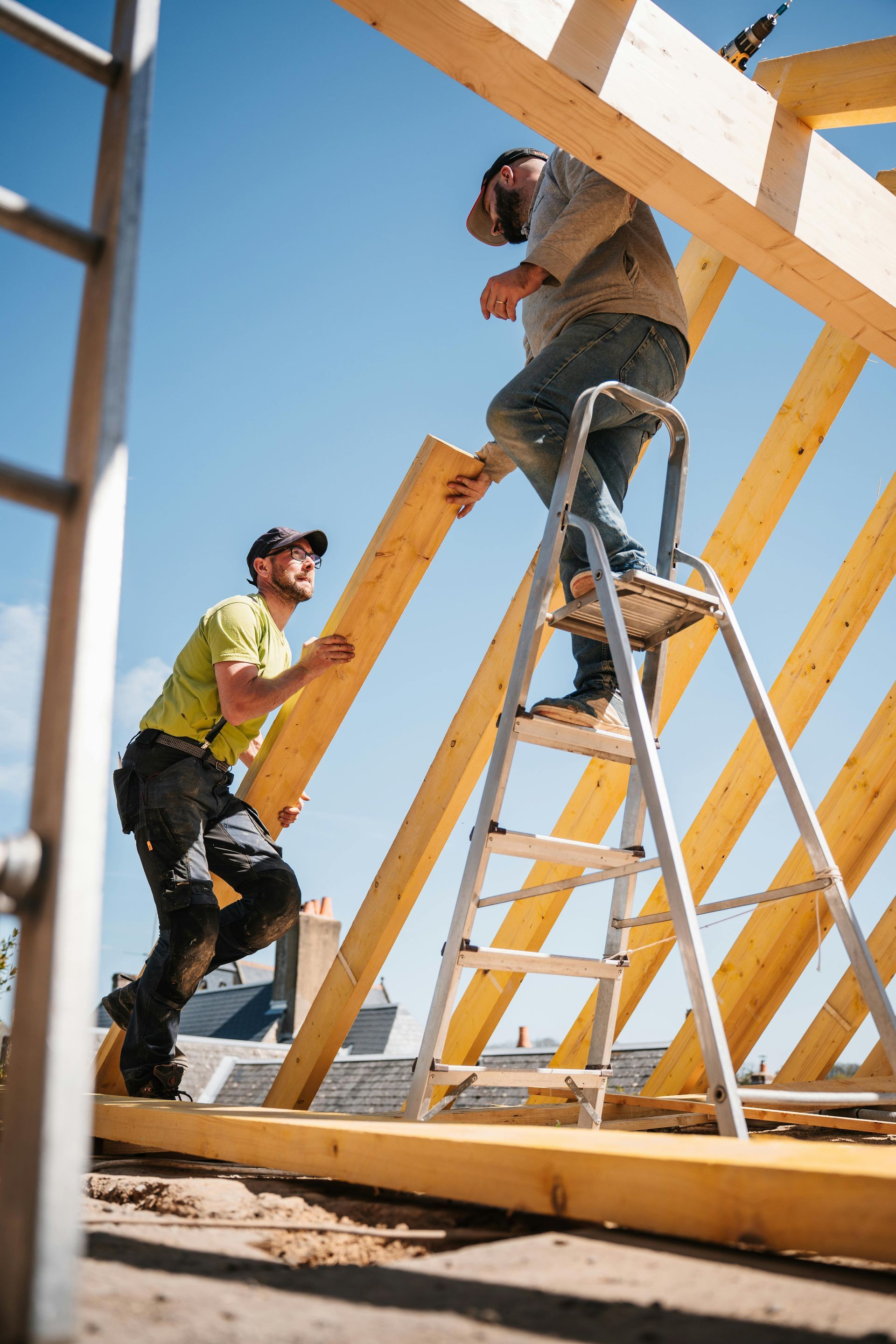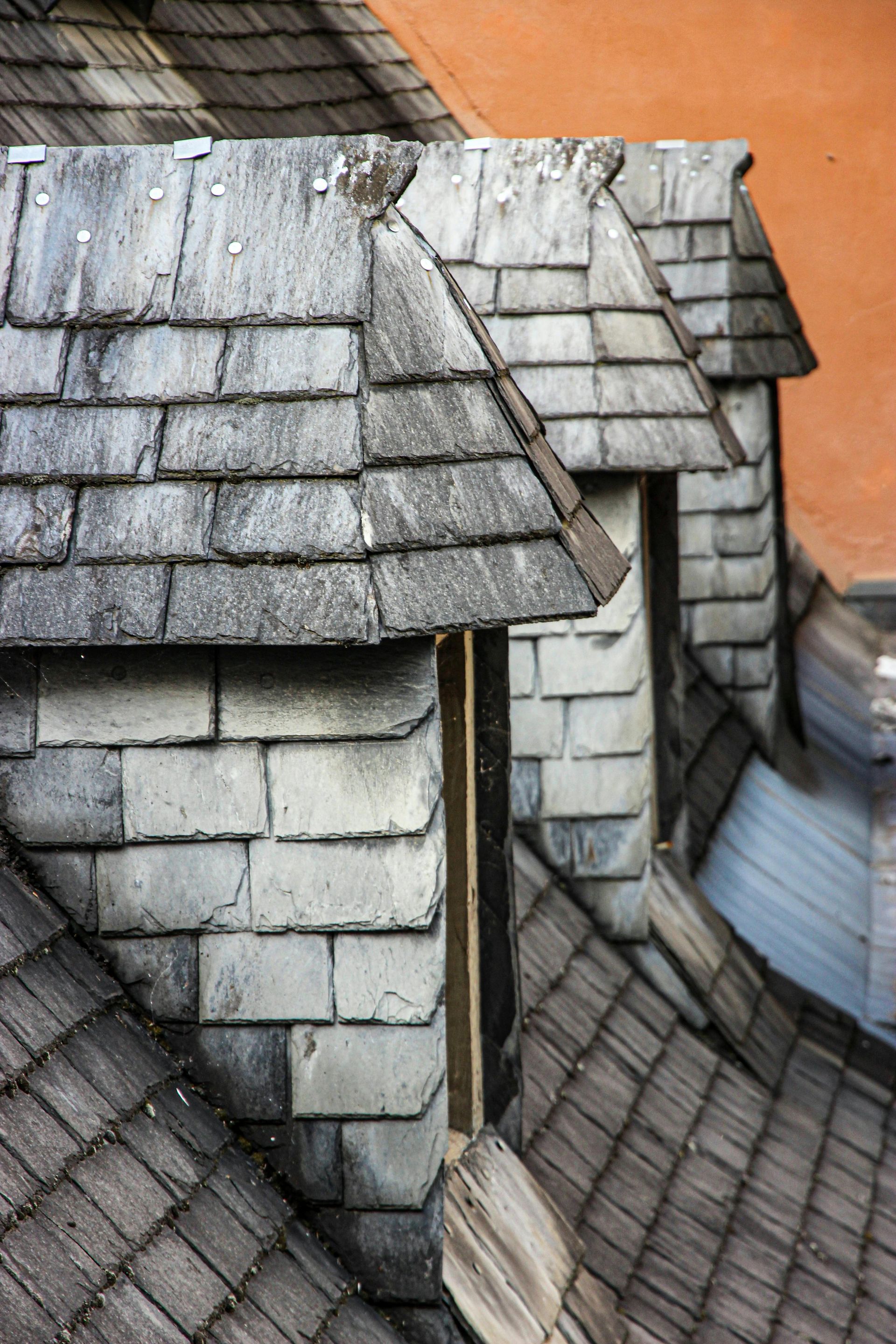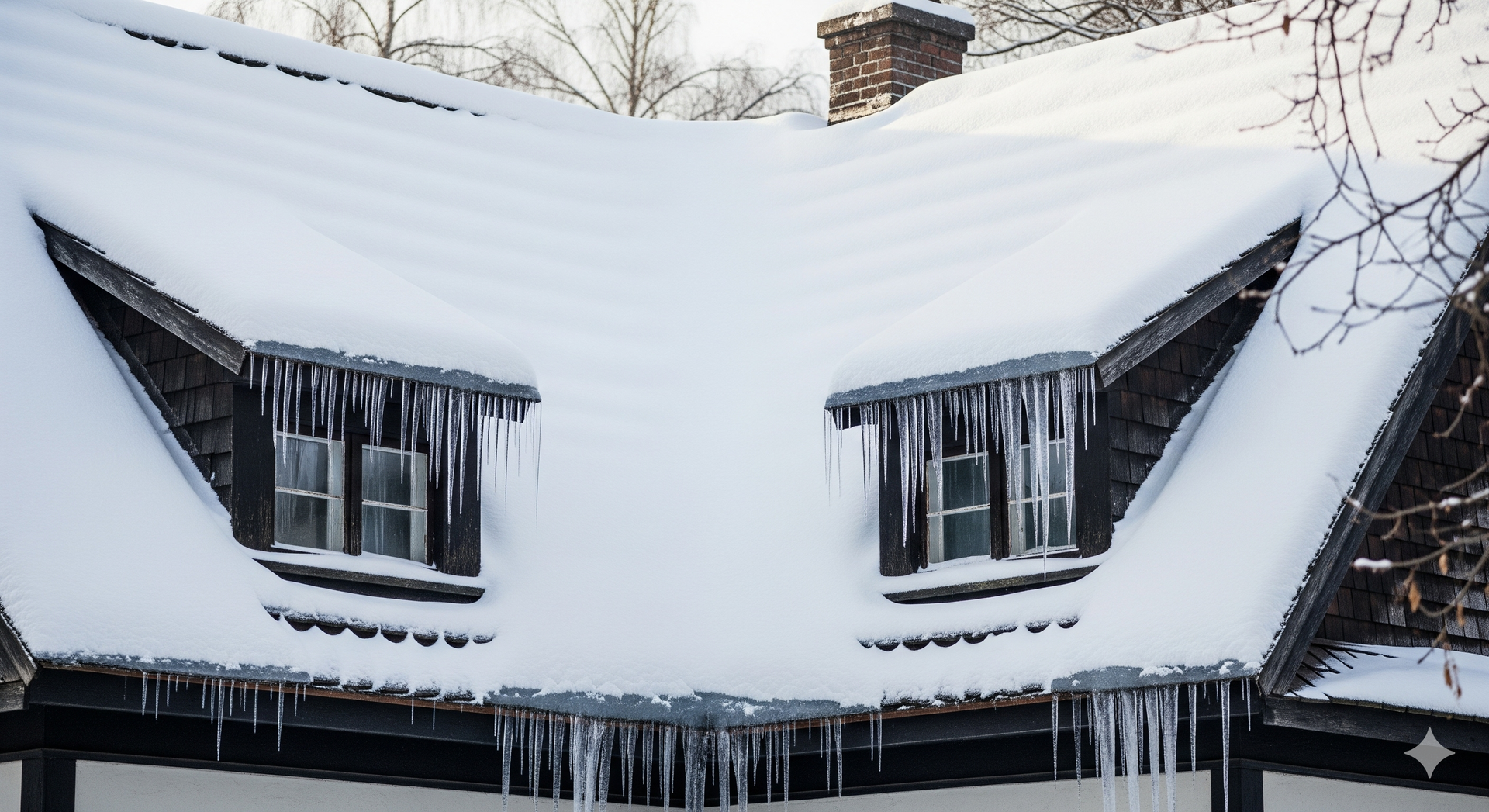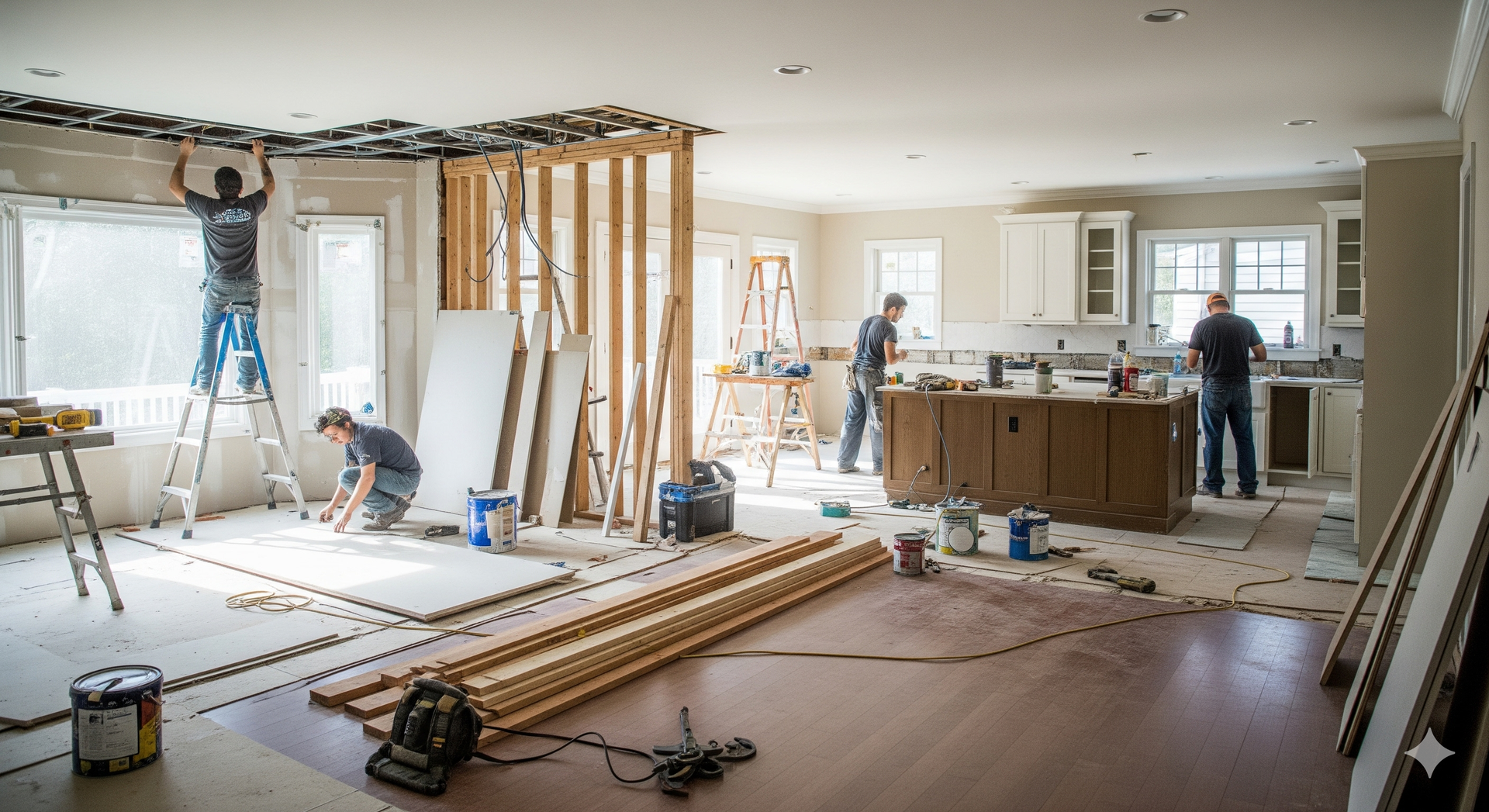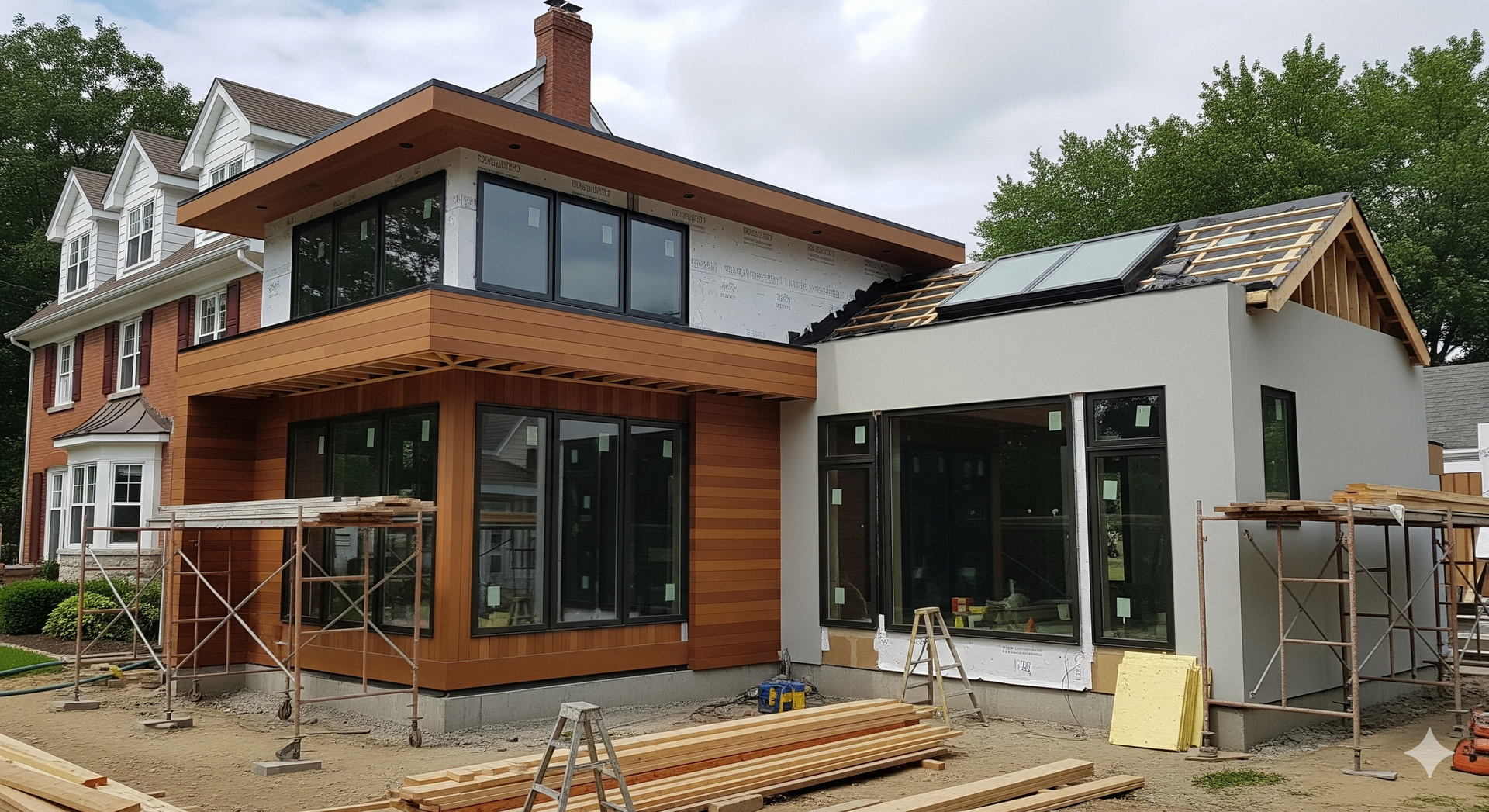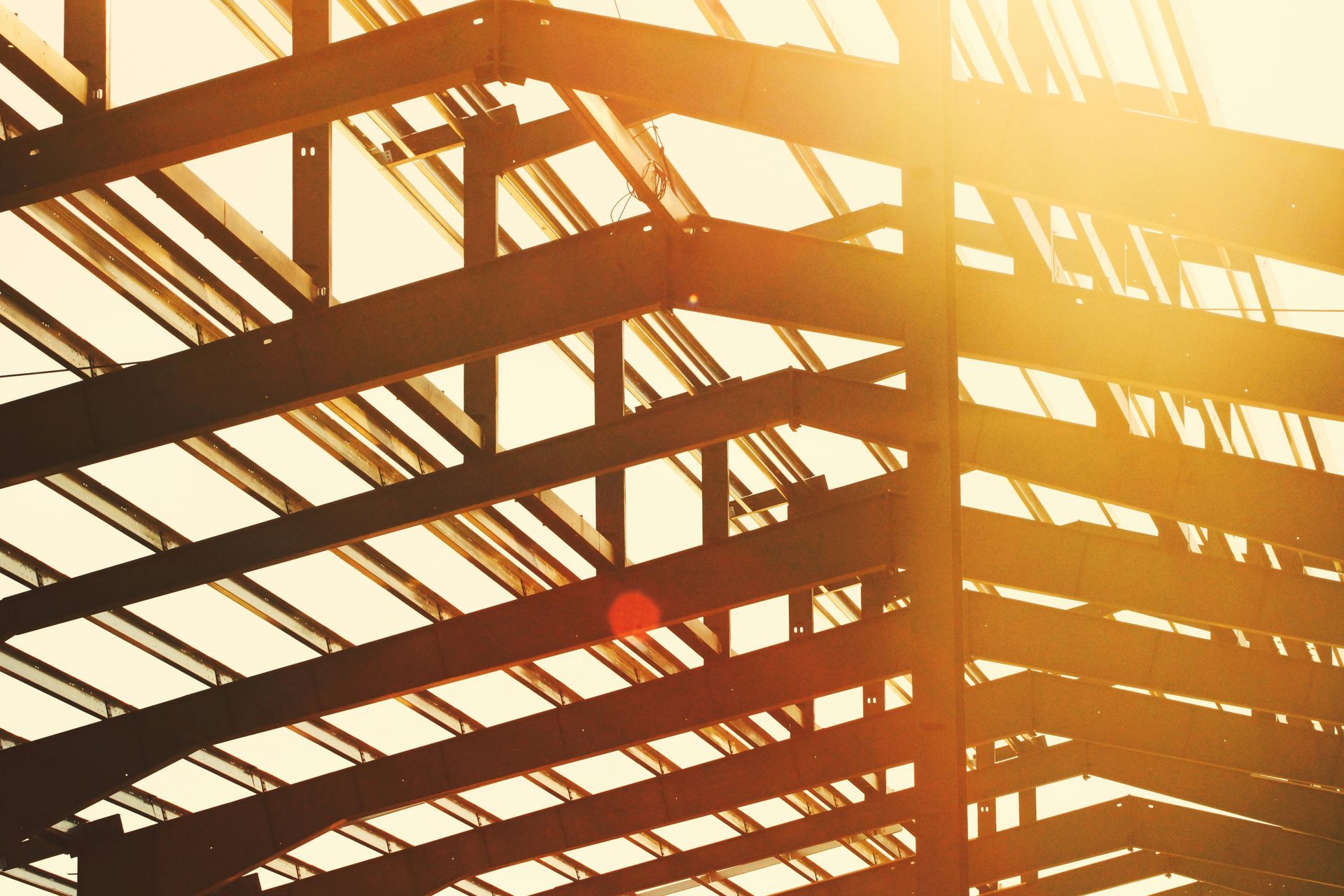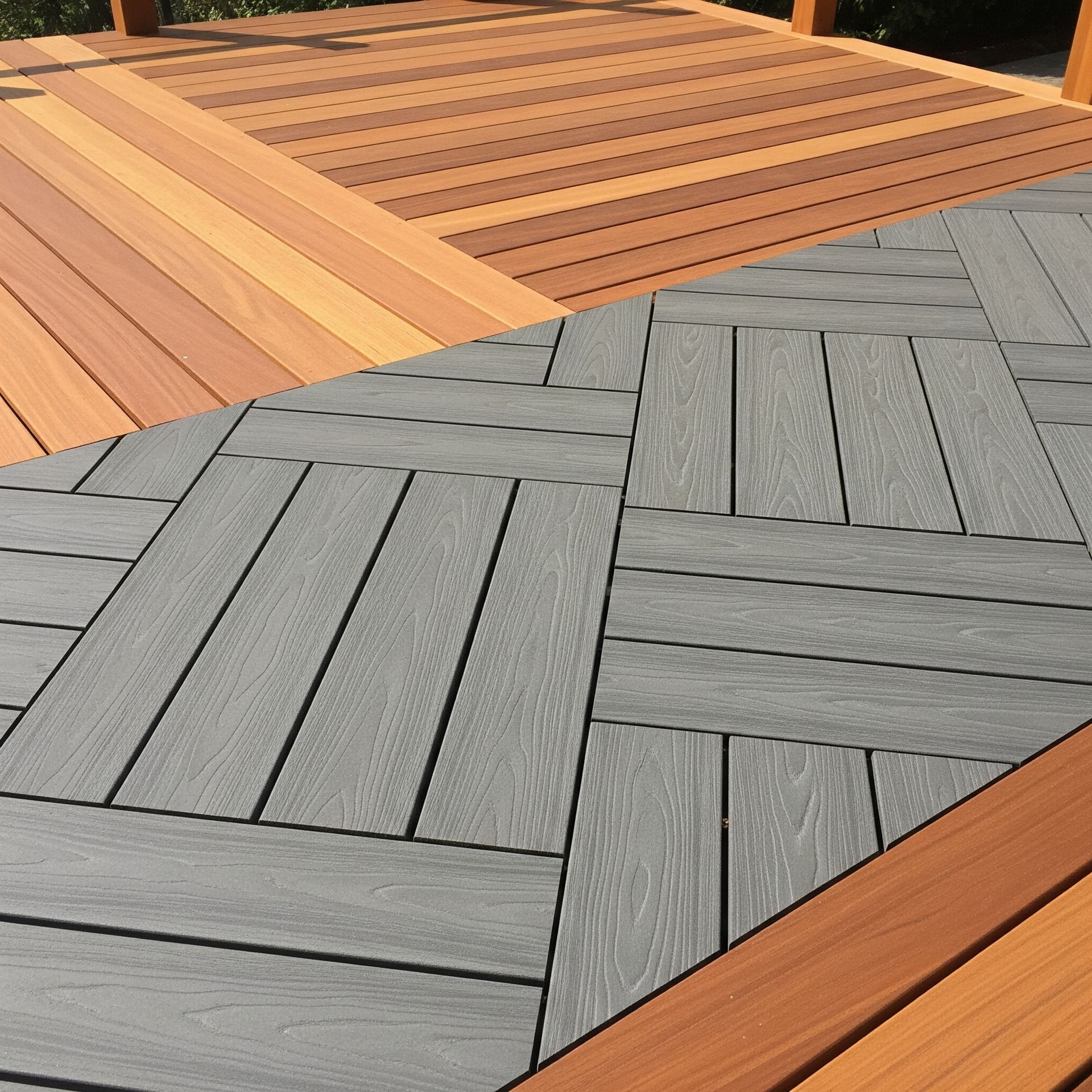Is It Time to Replace Your Gutters? Watch for These Red Flags
Your home's gutter system quietly protects your foundation, siding, and landscaping from water damage year after year. When gutters fail, the consequences can be costly, ranging from basement flooding to foundation cracks and exterior damage. Understanding when to invest in gutter replacement versus repair can save homeowners thousands in potential water damage repairs.
While some gutter issues can be resolved with targeted repairs, certain warning signs indicate that complete gutter replacement is the most cost-effective long-term solution. Recognizing these red flags early allows you to make an informed decision about your home's protection before minor issues become major headaches.
Key Takeaways
- Multiple cracks, holes, or rust spots throughout your gutter system indicate structural failure that requires complete replacement rather than piecemeal repairs.
- Gutters pulling away from the house or sagging sections suggest damaged fasteners and potential fascia board deterioration that often necessitates full system replacement.
- Frequent overflow during moderate rainfall typically indicates inadequate capacity or severe clogging issues that may require upgrading to larger gutters during replacement.
- Professional gutter replacement contractors can assess whether your current system meets local building codes and recommend appropriate materials for your climate and home style.
- Understanding aluminum gutter replacement cost versus other materials helps homeowners budget effectively for long-term protection and maintenance savings.
- Timing gutter replacement with other exterior projects like siding repair can reduce overall labor costs and ensure coordinated protection for your home.
Age and Material Deterioration
Gutter lifespan varies significantly based on material quality and environmental conditions. Aluminum gutters typically last 15-25 years with proper maintenance, while vinyl systems may need replacement after 10-15 years. Steel gutters can endure 20-30 years but require vigilant rust prevention, and copper systems often function effectively for 50+ years with minimal maintenance.
Material deterioration manifests differently across gutter types. Aluminum develops pinhole leaks and stress cracks at joints, while vinyl becomes brittle and prone to cracking in temperature extremes. Steel gutters show obvious rust staining and corrosion, particularly at seams and mounting points. Even premium materials show wear patterns that indicate when replacement becomes more economical than continued repairs.
Climate factors accelerate deterioration in specific ways. Coastal environments promote corrosion through salt exposure, while freeze-thaw cycles stress joints and mounting hardware. Areas with heavy tree coverage may experience accelerated wear from debris accumulation and organic acid exposure. When gutters approach their expected lifespan and show multiple deterioration signs, home gutter replacement becomes the prudent choice.
Structural Warning Signs That Demand Attention
Visible structural problems indicate serious gutter system failure requiring immediate attention. Sagging sections often result from accumulated debris weight, improper installation, or deteriorated mounting hardware. When gutters pull away from the fascia board, the issue extends beyond the gutter itself to potential structural damage requiring comprehensive repair.
Joint separation creates obvious failure points where water escapes the intended drainage path. These separations typically worsen over time as thermal expansion and contraction stress already weaken connections. Multiple separated joints throughout a system indicate systemic failure that makes replacement more cost-effective than extensive repairs.
Mounting hardware failure presents both immediate and long-term concerns. Loose gutters can fall unexpectedly, creating safety hazards and potential injury risks. Additionally, compromised mounting often damages fascia boards, requiring gutter and siding repair coordination. Professional assessment helps determine whether mounting issues stem from hardware failure or underlying structural problems.
Water Damage Indicators
Water stains on exterior walls directly below gutter lines indicate overflow or leakage problems. Fresh stains suggest active issues, while multiple stain layers show chronic problems that likely require system replacement. Staining patterns help identify specific failure points and assess whether localized repairs or complete replacement provides the best solution.
Foundation water pooling near the home perimeter signals inadequate water diversion. Properly functioning gutters channel water at least 6 feet from foundation walls through downspouts and extensions. When water consistently pools near the foundation despite gutter presence, the system likely lacks capacity or has developed serious drainage problems requiring replacement.
Basement moisture or minor flooding often traces back to gutter system failure. While multiple factors contribute to basement water issues, compromised gutters frequently overwhelm foundation drainage systems during heavy rainfall. Coordinating rain gutter replacement with basement waterproofing creates comprehensive moisture protection for your home.
| Issue | Repair Option | Replace When |
|---|---|---|
| Frequent overflow | Clean and adjust slope | Inadequate capacity for home size |
| Rust and corrosion | Sand and repaint affected areas | Widespread corrosion throughout system |
| Minor leaks | Seal with gutter caulk | Multiple leaks in different sections |
| Loose mounting | Refasten or replace hangers | Fascia board damage present |
Cost Considerations and Material Options
Gutter replacement cost varies significantly based on material choice, home size, and installation complexity. Aluminum gutter replacement cost typically ranges from $6-12 per linear foot installed, making it the most popular choice for residential applications. Vinyl systems cost $3-8 per linear foot but require more frequent replacement in harsh climates.
Premium materials command higher upfront costs but offer superior longevity. Steel gutters range from $8-15 per linear foot, while copper systems cost $15-30 per linear foot installed. When evaluating rain gutter repair cost versus replacement, consider that extensive repairs often approach 60-70% of replacement cost while providing only temporary solutions.
Labor factors significantly impact total project cost. Complex rooflines, multiple stories, and accessibility challenges increase installation time and safety requirements. Coordinating gutter replacement services with other exterior work like roofing or siding projects can reduce overall labor costs through efficiency gains and equipment sharing.
Hidden costs often emerge during replacement projects. Fascia board repair or replacement adds $8-15 per linear foot when existing boards show rot or damage. Upgrading downspout systems or adding drainage extensions increases material and labor costs but provides essential water management improvements. Professional contractors identify these needs during initial assessment rather than discovering them mid-project.
Timing and Weather Factors
Seasonal timing affects both gutter replacement cost and project success. Spring and fall represent optimal installation periods when weather conditions remain stable and contractors maintain reasonable availability. Summer projects may encounter scheduling delays due to high demand, while winter installations face weather-related complications and material handling challenges.
Emergency replacements often cost significantly more than planned projects. When gutters fail during storm seasons, limited contractor availability and urgent timelines drive up labor costs. Planning replacement when early warning signs appear allows homeowners to choose optimal timing and secure competitive pricing from multiple contractors.
Weather considerations extend beyond installation timing to material performance. Homes in freeze-thaw climates benefit from seamless gutter systems that minimize joint failure points. Areas with heavy rainfall may require larger capacity gutters or additional downspouts during replacement to handle increased water volume effectively.
Professional Installation vs DIY Considerations
Professional gutter replacement contractors bring specialized tools, experience, and warranty protection that justify their services for most homeowners. Proper installation requires precise slope calculations, secure mounting techniques, and code compliance knowledge that prevents future problems. Professional teams complete installations efficiently while maintaining safety standards on elevated work areas.
DIY gutter replacement appeals to experienced homeowners seeking cost savings, but several factors complicate successful installation. Seamless gutters require professional equipment for on-site fabrication, while sectional systems need careful measurement and joint sealing. Safety concerns increase significantly with multi-story homes or complex rooflines that require specialized equipment and fall protection.
Material sourcing poses additional challenges for DIY projects. Professional contractors access wholesale pricing and maintain relationships with suppliers for quick material delivery. Homeowners typically pay retail pricing and may encounter availability issues for specific materials or colors. Professional installation often includes material warranties that DIY projects cannot match.
The question of "when do gutters need to be replaced" becomes clearer through a professional assessment that considers factors beyond obvious damage. Experienced contractors evaluate mounting structures, capacity requirements, and integration with existing drainage systems. This comprehensive approach ensures replacement projects address underlying issues rather than simply replacing visible components.
Frequently Asked Questions
How long does gutter replacement typically take?
Most residential gutter replacement projects take 1-2 days for average-sized homes with straightforward installations. Complex rooflines or homes requiring fascia board repair may extend the timeline to 3-4 days.
Can I replace gutters during winter months?
Winter gutter replacement is possible but presents challenges, including material brittleness, safety concerns, and limited working hours due to daylight restrictions. Spring and fall installations typically provide better conditions and more competitive pricing.
Should I upgrade gutter size when replacing my system?
Upgrading to larger gutters makes sense if your current system overflows during moderate rainfall or if you've added roof area since original installation. Professional contractors can calculate appropriate capacity based on your roof area and local rainfall patterns.
How do I choose between aluminum and vinyl gutters?
Aluminum gutters offer superior durability and weather resistance, making them ideal for most climates despite higher upfront costs. Vinyl gutters work well in moderate climates but may become brittle in extreme temperature variations.
What warranties should I expect with professional installation?
Reputable contractors typically offer 2-5 year workmanship warranties covering installation defects and mounting failures. Material warranties vary by manufacturer but commonly range from 15-30 years for aluminum systems.
Final Thoughts
Recognizing when gutters need replacement rather than repair protects your home from expensive water damage while maximizing your investment value. Multiple warning signs like structural problems, chronic overflow, and widespread deterioration indicate that replacement provides better long-term value than continued repairs. Professional assessment helps homeowners understand their options and make informed decisions about timing and materials.
Investing in quality gutter replacement services creates lasting protection for your home's foundation, siding, and landscaping. When coordinated with other exterior maintenance projects, gutter replacement becomes part of a comprehensive home protection strategy that preserves property value and prevents costly water damage repairs. Taking action when early warning signs appear allows you to plan the project on your timeline rather than responding to emergency failures.
Schedule professional gutter replacement services now.
Reference:
https://www.groundworks.com/resources/how-long-before-water-will-damage-foundation/


